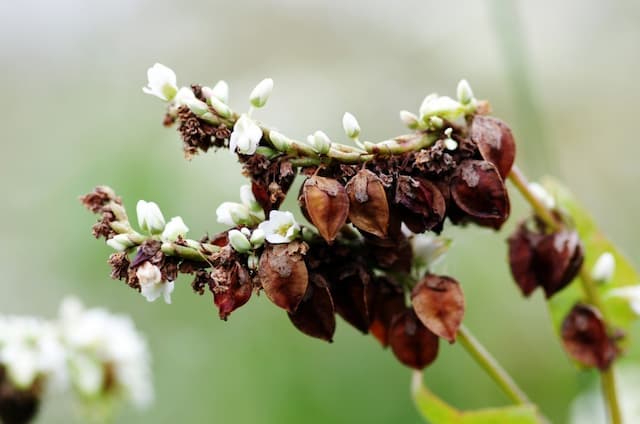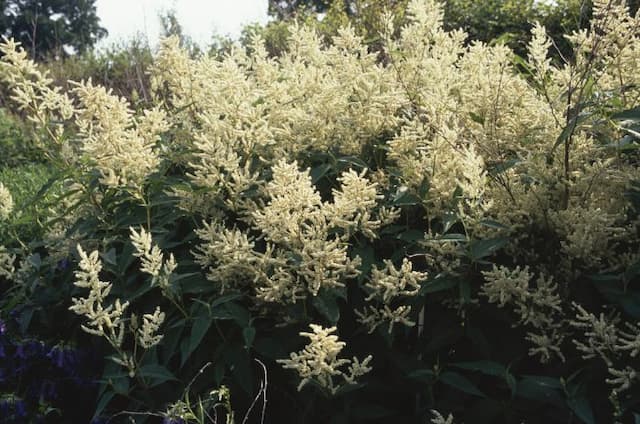Curly dock Rumex crispus

ABOUT
The plant known as curly dock has a distinctive appearance characterized by its long, narrow leaves with wavy or crimped edges that give it its common name. The leaves can vary in color from green to reddish-green and often have a slightly sour or bitter taste when young. The mature leaves are tougher and more fibrous. The curly dock produces tall flower spikes that are covered in numerous small, greenish or reddish-brown flowers. These spikes bear fruit that is encased in a hard, dark brown casing that can persist into the winter. The plant's root is thick and deep, often reddish-brown in color. Curly dock is a hardy plant that can be found growing in a variety of environments, including fields, roadsides, and waste areas.
About this plant
 Names
NamesFamily
Polygonaceae.
Synonyms
Curly Dock, Curled Dock, Yellow Dock, Sour Dock, Narrow Dock, Garden Patience, Narrow-leaved Dock.
Common names
Rumex elongatus, Lapathum crispum, Lapathum lanceolatum, Rumex area, Rumex neglectus, Rumex crispus var. elongatus.
 Toxicity
ToxicityTo humans
Curly dock can contain high levels of oxalic acid, which is toxic when consumed in large quantities. Eating large amounts of curly dock can lead to symptoms such as kidney stones, stomach pain, nausea, vomiting, and diarrhea. In severe cases, the toxicity may result in kidney damage. Additionally, some individuals might experience an allergic reaction to the plant.
To pets
Curly dock also poses a risk to pets due to its high oxalic acid content. Consumption in large amounts can lead to symptoms similar to those in humans, such as vomiting, diarrhea, abdominal pain, and potentially kidney damage. In extreme cases, it can result in calcium deficiency and mineralization in pet bodies due to the oxalic acid binding with calcium. Owners should prevent pets from ingesting curly dock to avoid these risks.
 Characteristics
CharacteristicsLife cycle
Biennials
Foliage type
Deciduous
Color of leaves
Green
Flower color
Greenish
Height
2 feet [0.61 meters]
Spread
1 foot [0.30 meters]
Plant type
Herb
Hardiness zones
5
Native area
Europe
Benefits
 General Benefits
General Benefits- Nutritional Value - Yellow Dock (Rumex crispus) contains vitamins and minerals such as vitamin C, iron, and calcium, making it a plant with potential nutritional benefits.
- Digestive Aid - The plant is traditionally used to support digestion due to its bitter properties which can stimulate digestive juices.
- Livestock Fodder - It can serve as fodder for livestock, although it should be consumed in moderation due to potential oxalic acid content.
- Soil Fertility - Yellow Dock can enhance soil fertility by bringing up nutrients from deeper soil layers with its deep taproot.
- Biodiversity - It contributes to biodiversity in various ecosystems by providing habitat and food for a range of insects and wildlife.
- Companion Planting - It can be used in companion planting to attract beneficial insects that prey on pests.
- Culinary Use - Leaves of young plants may be consumed in moderation as a leafy vegetable, after proper cooking to reduce oxalates.
- Dye Production - The roots can be used to produce a natural dye, traditionally yielding a yellow color.
 Medical Properties
Medical Properties- Antioxidant: Rumex crispus contains compounds that may have antioxidant effects, which could help to protect cells from damage caused by free radicals.
- Laxative: The plant has been traditionally used for its laxative properties, which can help to relieve constipation.
- Diuretic: It has diuretic properties, promoting the increase of urine flow, which can help in detoxification and reducing fluid retention.
- Astringent: The astringent attributes of yellow dock can be useful in toning tissues and reducing inflammation.
- Digestive Aid: The herb may help in improving digestion and addressing issues such as heartburn and bloating.
- Liver Detoxification: Historically, it has been used to support liver function and cleanse toxins from the body.
- Skin Conditions: Topical preparations of Rumex crispus have been used for treating various skin conditions and irritations.
- Respiratory Health: It has been utilized in traditional medicine to treat respiratory issues such as coughs.
 Air-purifying Qualities
Air-purifying QualitiesThis plant is not specifically known for air purifying qualities.
 Other Uses
Other Uses- Rumex crispus, commonly known as curly dock, can be used to produce a yellow dye from the stems and roots for textile coloring.
- In some cultures, the seeds of curly dock are ground into flour or mixed with other flours for baking.
- The plant has been traditionally used as a natural insect repellent when the leaves are burnt or used in poultices.
- Young leaves of curly dock can be fermented to create a sour flavoring agent similar to sorrel in culinary practices.
- The leaves may be added to compost piles as a source of nutrients and to accelerate the decomposition process.
- Curly dock is sometimes used in natural landscaping for erosion control due to its extensive root system.
- The tannin present in the plant can be extracted and used for tanning leather naturally.
- It’s used in some regions as animal feed, particularly for sheep, who are tolerant to its oxalic acid content.
- Curly dock has been used historically as a part of natural fabric printing processes to transfer outlines and patterns onto materials.
- In crafting, the red-brown color of the mature seeds is used to add color and texture to flower arrangements and decorative displays.
Interesting Facts
 Feng Shui
Feng ShuiThe Curly Dock is not used in Feng Shui practice.
 Zodiac Sign Compitability
Zodiac Sign CompitabilityThe Curly Dock is not used in astrology practice.
 Plant Symbolism
Plant Symbolism- Resilience: Rumex crispus, commonly known as curly dock or yellow dock, is known for its hardiness and ability to grow in poor soil, symbolizing the ability to thrive in adverse conditions.
- Healing: Historically used for medicinal purposes, yellow dock represents the healing of not only physical ailments but also emotional ones.
- Transformation: The plant’s progression from a green leafy form to a brown, dried appearance as the season's change can symbolize transformation and the cycle of life.
- Adaptability: Like its capacity to grow in different environments, yellow dock can symbolize adaptability to life's various circumstances.
 Water
WaterCurly dock, or Rumex crispus, should be watered regularly to maintain moist but not waterlogged soil conditions. An ideal regimen would be to water moderately, applying approximately 1-2 gallons per week, depending on climate and soil drainage. It's important to allow the top inch of soil to dry out between watering sessions to avoid overwatering. During the growing season, in hotter and drier climates, increase the frequency of watering but always check the soil moisture level before adding more water.
 Light
LightCurly dock thrives best in full sun to partial shade. It should be placed in a location that receives at least 4 to 6 hours of sunlight daily. However, in extremely hot climates, some afternoon shade can be beneficial to prevent scorching. The plant is adaptable, but for optimal growth, ensure it gets plenty of light without being exposed to harsh, direct sunlight for prolonged periods.
 Temperature
TemperatureCurly dock prefers a broad range of temperatures and is hardy in the presence of cold, surviving down to around 20 degrees Fahrenheit. It grows best at temperatures between 50 to 75 degrees Fahrenheit but can tolerate high temperatures as long as adequate water is provided. Curly dock should be protected from extreme cold, especially when young.
 Pruning
PruningPruning curly dock is usually done to remove dead or damaged leaves and to control its spread, as it can be invasive. Pruning can be done anytime during the growing season when you notice dead stems or leaves. However, the best time for a more thorough pruning is in the late fall or early winter. Cutting back the plant can also encourage a bushier growth habit and prevent self-seeding if done before the seeds mature.
 Cleaning
CleaningAs needed
 Soil
SoilCurly dock prefers a soil mix with good drainage. A mix of loamy soil, compost, and sand in equal proportions creates an ideal environment for its growth. The soil pH should be slightly acidic to neutral, ranging from 6.5 to 7.0, for optimal plant health and nutrient absorption.
 Repotting
RepottingCurly dock is a perennial weed that doesn't generally need repotting as it grows well in natural conditions. However, if grown in a container, it can be repotted every two to three years to replenish the soil and accommodate root growth.
 Humidity & Misting
Humidity & MistingCurly dock thrives in standard outdoor humidity levels and does not require any special humidity conditions. It is quite adaptable and can tolerate a wide range of humidity levels found in its natural environment.
 Suitable locations
Suitable locationsIndoor
Place curly dock in a well-lit area and keep soil moist.
Outdoor
Plant in sun or partial shade; water regularly; well-draining soil.
Hardiness zone
3-10 USDA
 Life cycle
Life cycleRumex crispus, commonly known as curly dock, begins its life as a seed, which germinates in late winter or early spring when the conditions are moist and cool. Upon germination, the seedling emerges and develops a rosette of curly-edged leaves close to the ground. As it grows, curly dock develops a deep taproot, which helps it to survive periods of drought and poor soil conditions. After establishing itself, usually in its second year, the plant sends up a flower stalk that can grow up to a meter in height, bearing clusters of small greenish flowers which are wind-pollinated. After pollination, these flowers develop into small fruits, each containing a single seed that matures by late summer or fall. When the seeds are mature, they disperse by wind, water, or attachment to animals, completing the life cycle and allowing for colonization of new areas.
 Propogation
PropogationPropogation time
Spring to early summer
Propogation: Curly dock, or Rumex crispus, is typically propagated through seeds. The most popular method involves collecting the seeds once they've matured, usually in late summer or early fall. To propagate, seeds should be sown directly into the soil at a depth of about 1/2 inch (approximately 1.27 cm). Curly dock prefers well-drained soil and can tolerate a wide range of soil conditions. It's important to keep the soil moderately moist until germination, which usually occurs in one to two weeks. Once established, Rumex crispus can spread quickly, so it's crucial to manage the plants to prevent unwanted spread to other parts of the garden or natural areas.





![Red bistort [JS Seven Oaks Village]](/_next/image?url=https%3A%2F%2Fplants-admin.emdemapps.com%2Fimages%2Fplants%2F%2Fimages%2F604b56557c0e3.png&w=640&q=75)



